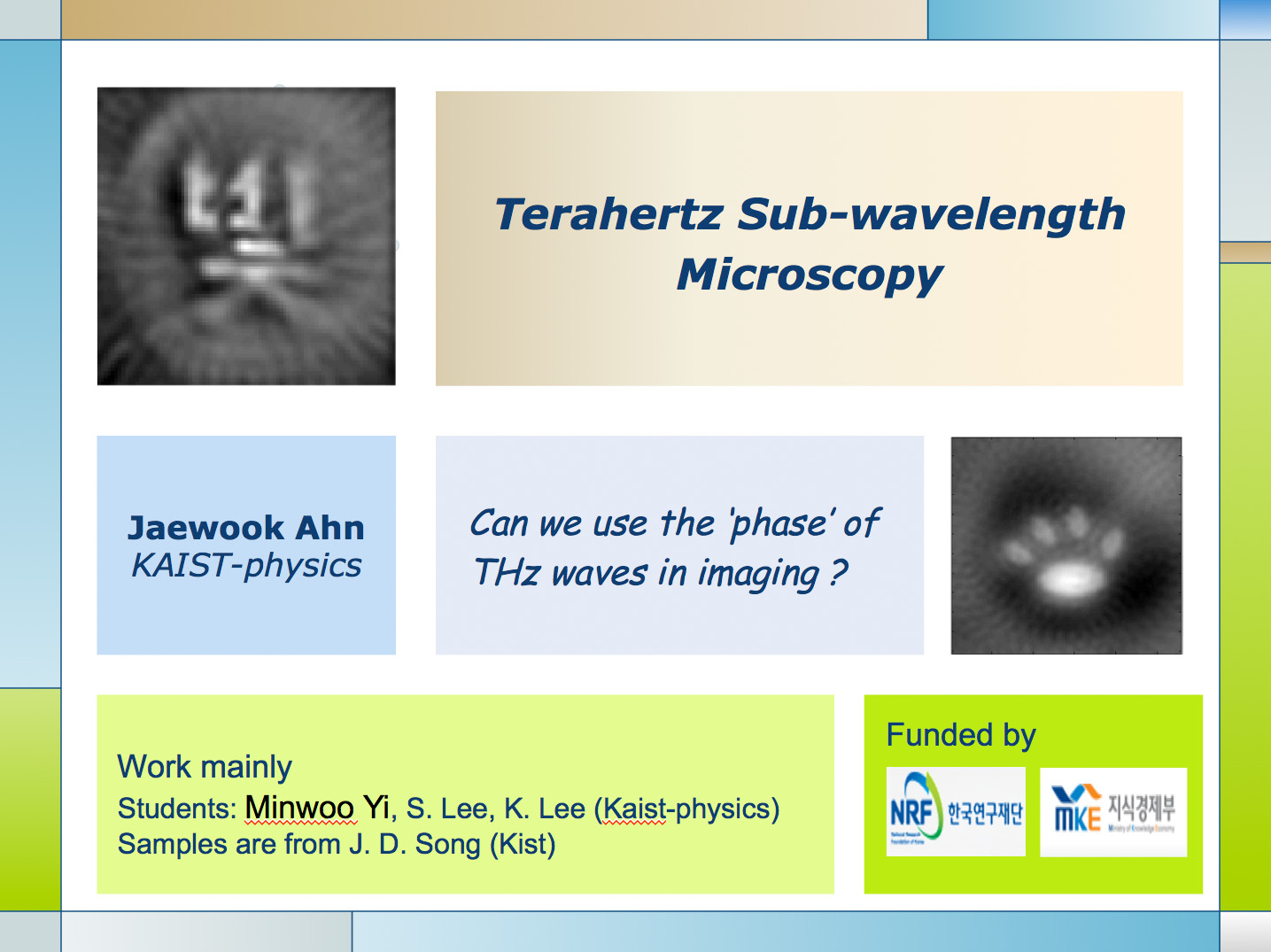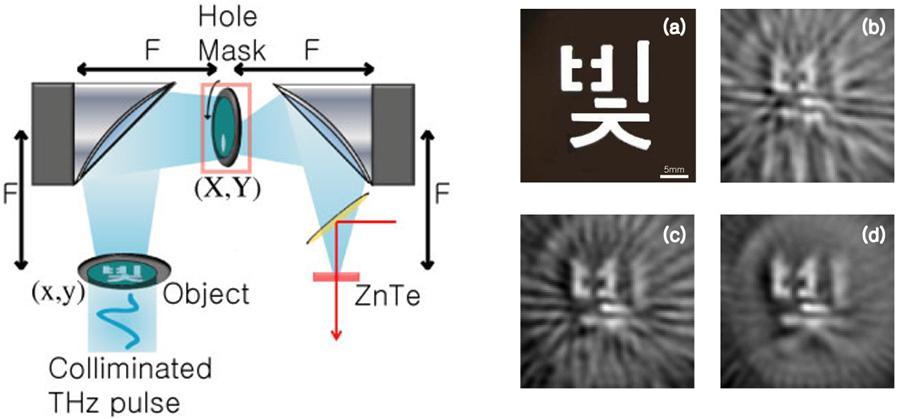Difference between revisions of "Terahertz Electronics"
From KAIST Quantum Computing Lab Wiki
Jump to navigationJump to search| Line 1: | Line 1: | ||
| − | [[Image:THzCDMAimaging.jpg| | + | [[Image:THzCDMAimaging.jpg|center|500px]] |
| − | |||
<big>'''THz coherent optical computer'''</big><br> | <big>'''THz coherent optical computer'''</big><br> | ||
[[Image:THzCOC.jpg|left|300px]] | [[Image:THzCOC.jpg|left|300px]] | ||
Single point terahertz imagery of 2D objects is demonstrated by exploiting the broadband nature of ultrafast terahertz wave in a coherent optical computing setup. In the devised imagery, a collimated terahertz beam is illuminated on an object and the scattered fields are measured through a spatial mask at the Fourier plane in a 4-f terahertz time-domain spectroscope. This arrangement allows conversion of radial spatial frequencies of the object to the temporal spectrum of the pulse. Hence, a 2D image stored in the terahertz waveforms can be readily obtained. | Single point terahertz imagery of 2D objects is demonstrated by exploiting the broadband nature of ultrafast terahertz wave in a coherent optical computing setup. In the devised imagery, a collimated terahertz beam is illuminated on an object and the scattered fields are measured through a spatial mask at the Fourier plane in a 4-f terahertz time-domain spectroscope. This arrangement allows conversion of radial spatial frequencies of the object to the temporal spectrum of the pulse. Hence, a 2D image stored in the terahertz waveforms can be readily obtained. | ||
Latest revision as of 08:48, 11 September 2009
THz coherent optical computer
Single point terahertz imagery of 2D objects is demonstrated by exploiting the broadband nature of ultrafast terahertz wave in a coherent optical computing setup. In the devised imagery, a collimated terahertz beam is illuminated on an object and the scattered fields are measured through a spatial mask at the Fourier plane in a 4-f terahertz time-domain spectroscope. This arrangement allows conversion of radial spatial frequencies of the object to the temporal spectrum of the pulse. Hence, a 2D image stored in the terahertz waveforms can be readily obtained.

